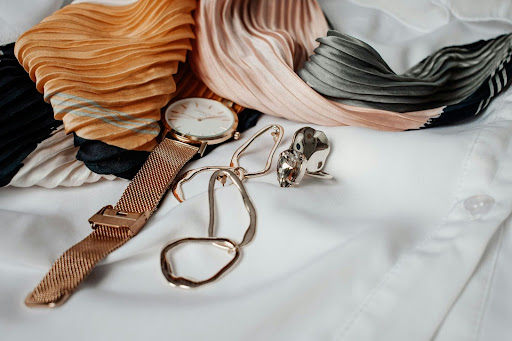Buying second-hand jewellery and watches offers a unique opportunity to acquire luxury items at a fraction of the retail price. Enthusiasts can find high-quality, timeless pieces that tell a story without breaking the bank. This growing trend appeals to those who appreciate craftsmanship and want to stand out with distinctive accessories.
The second-hand market is rich with options ranging from vintage designs to contemporary brands. Shoppers are increasingly turning to pre-owned items for sustainability and value, making this a practical choice for many. With proper research and careful buying, individuals can enjoy the charm of luxury without the hefty price tag.
Navigating this market requires some knowledge, but the rewards are worth the effort. By understanding the fundamentals of quality and authenticity, anyone can become a savvy buyer. This journey not only enhances personal style but also supports a more sustainable fashion landscape.
Advantages of Second-Hand Luxury
Choosing second-hand luxury items offers buyers exceptional financial benefits, promotes eco-friendly practices, and presents unique pieces with historical significance. These advantages make the investment more appealing to discerning shoppers.
Exceptional Value Retention
Second-hand luxury jewellery and watches typically retain their value better than new items. When a luxury item is purchased new, it often depreciates significantly once it leaves the store. In contrast, previously owned items maintain their value due to brand reputation, craftsmanship, and demand.
A study showed that some high-end watches can appreciate over time, further increasing their allure as an investment. Buyers looking for value will find that carefully selected second-hand pieces can be resold later for a similar price, enhancing their initial purchase decision.
Sustainability and Eco-Friendliness
Purchasing second-hand luxury items contributes to sustainable practices and reduces environmental impact. The production of new luxury goods requires substantial resources, including raw materials, energy, and labor. By opting for pre-owned pieces, buyers help decrease waste and limit the demand for new manufacturing.
Additionally, the resale market encourages a circular economy, where items are reused rather than discarded. This trend aligns with growing consumer interest in sustainability and responsible consumption, making second-hand luxury an appealing choice for eco-conscious individuals.
Vintage Charm and Rarity
Second-hand luxury jewellery and watches often possess a distinctive vintage charm that new items may lack. Many older pieces feature unique designs and craftsmanship that showcase historical styles and moments in fashion. Collectors and fashion enthusiasts appreciate these characteristics, making them highly sought after in the market.
Rarity also plays a significant role in the allure of second-hand luxury. Certain vintage items may have limited production runs, making them exclusive. This sense of uniqueness not only satisfies collectors but also adds personal value and storytelling to each piece, enriching the buyer’s experience.
How to Assess Quality and Authenticity
Assessing the quality and authenticity of second-hand jewellery and watches is crucial for making informed purchases. Recognizing key indicators such as hallmarks, certifications, and provenance can help buyers avoid counterfeits and ensure value.
Understanding Hallmarks and Certifications
Hallmarks serve as an assurance of quality and authenticity. They are small stamps usually found on precious metal items, indicating the metal’s purity. For instance, a hallmark of “925” indicates sterling silver, while “750” denotes 18-karat gold.
Buyers should familiarize themselves with reputable hallmarking authorities. Certifications from organizations like the Gemological Institute of America (GIA) for diamonds add significant credibility. Checking for these markers can prevent the acquisition of subpar or counterfeit items.
Recognizing Counterfeits
Counterfeits can be sophisticated, making it necessary for buyers to stay alert. Begin by examining the craftsmanship. Authentic pieces usually exhibit consistent quality, with no rough edges or inconsistencies.
Utilizing online resources to research specific brands can provide insight into common counterfeit markers. For example, examine logos, serial numbers, and design intricacies. If possible, seek professional appraisals, especially for high-value pieces, to confirm authenticity.
The Importance of Provenance
Provenance refers to the history of ownership and contributes significantly to an item’s value. Knowing an item’s journey can add authenticity and enhance its appeal. Provenance can come from original purchase receipts, appraisals, or even sworn affidavits from previous owners.
When buying, inquire about the item’s provenance. Reputable sellers often have detailed records that establish authenticity. Provenance not only increases the likelihood of real items but also provides potential appreciation in value over time.
Best Practices for Purchasing
Knowing how to purchase second-hand jewellery and watches is crucial for ensuring value, quality, and satisfaction. Key considerations include selecting trustworthy sellers, employing negotiation strategies, and understanding warranty options.
Choosing Reputable Sellers
Finding a reputable seller is essential for a successful purchase. Buyers should research sellers through online reviews and testimonials. They can also check their presence on social media platforms for credibility.
Trustworthy sources include:
- Established jewellery stores
- Respected auction houses
- Certified pre-owned dealers
Buyers should ask for provenance or certifications that verify authenticity. Meeting in person for high-value items is advisable to examine the pieces directly. Trust your instincts; if something feels off, consider looking elsewhere.
Negotiation Tactics for Better Prices
Negotiation can significantly impact the final price. Buyers should start by researching the market value of similar items. This knowledge gives leverage during discussions.
Effective negotiation tactics include:
- Starting with a lower offer based on research
- Pointing out flaws or wear that may justify a lower price
- Staying calm and polite while negotiating
A willingness to walk away can often prompt sellers to reconsider their price. Buyers should have a budget in mind and be prepared to stick to it to avoid overspending.
Securing a Warranty and Return Policy
A clear warranty and return policy provide peace of mind for buyers. Before finalizing a purchase, they should inquire about the seller’s policies on repairs, returns, and authenticity guarantees.
Important features to consider:
- Warranty length and coverage details
- The seller’s return window
- Any conditions that may void the warranty
Documenting the agreement in writing ensures both parties understand the terms. This step is crucial for items over a specific value, as it protects the buyer’s investment.
Maintaining Your Investment
Proper care and attention are essential for preserving the value of second-hand jewellery and watches. Regular maintenance can enhance longevity, ensuring that these luxury items remain in excellent condition over time.
Routine Care and Cleaning
Routine care is vital for maintaining the appearance of jewellery and watches. For jewellery, gentle cleaning with a soft cloth after each wear prevents build-up from sweat and oils. For watches, a soft brush can help remove dust and dirt.
Tips for cleaning:
- Use a mild soap solution for deeper cleaning.
- Avoid harsh chemicals that can damage finishes.
- Store items separately to prevent scratches.
It’s also important to remove jewellery before activities such as swimming or exercising. This practice minimizes exposure to potential damage.
Professional Servicing
Professional servicing is recommended for watches, particularly those with intricate movements. A qualified watchmaker should inspect mechanical movements at least every three to five years. This servicing helps to lubricate components, replace worn parts, and ensure accurate timekeeping.
For jewellery, periodic inspections by a jeweller can identify loose stones or damaged settings before they become significant issues. Regular professional care can significantly extend the life of these luxury items.
Servicing Checklist:
- Schedule a watch service every 3-5 years.
- Inspect jewellery settings annually.
- Keep detailed records of all servicing.
Insurance and Protection
Insuring second-hand jewellery and watches provides financial protection against loss, theft, or damage. It’s crucial to obtain appraisals to establish value, as this forms the basis for insurance coverage.
Key points regarding insurance:
- Choose an insurance policy that covers replacement costs.
- Document all items with photographs and appraisals.
- Review and update coverage as needed, especially after acquiring new pieces.
Additionally, consider protective packaging for storage to safeguard against environmental damage.



